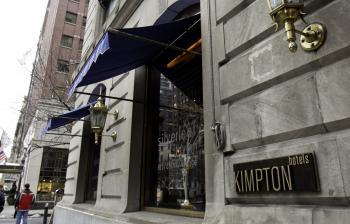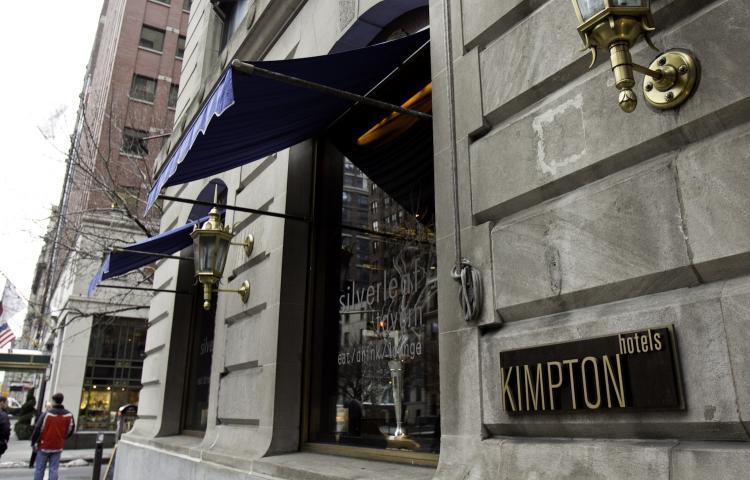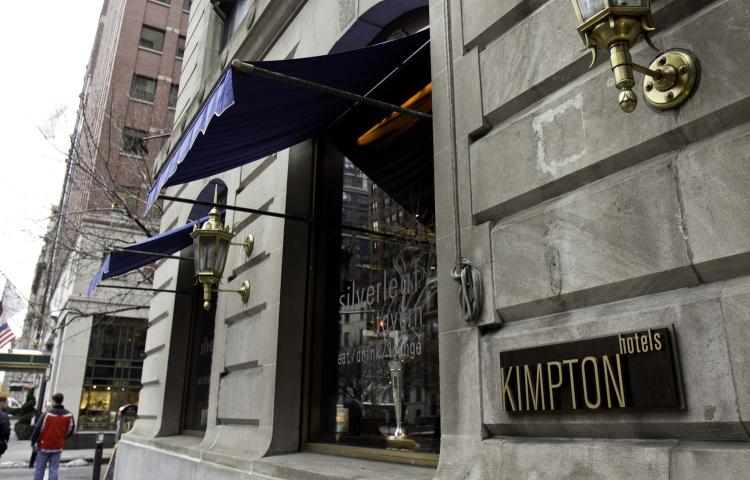NEW YORK—With 48 million tourists visiting the city in 2010, New York City was the No. 1 tourist destination in America two years running. Hotel development is a lucrative business in spite of economic decline.
Kimpton Hotel and Restaurant Group LLC, already owns several luxury hotels in the city including The Muse near Times Square, 70 park avenue hotel, and Eventi in Chelsea. The company plans to build 10 more hotels in New York City in the next 10 years, Kimpton CEO Michael Depatie told Bloomberg Businessweek at the Americas Lodging Investment Summit in San Diego on Tuesday.
“Demand in that city is frankly insane,” said Depatie. “We’re focused on areas in Manhattan where you typically don’t have many hotels, like the Meatpacking District, Chelsea, or Tribeca.”
Vernon Jones, CEO of real estate promotion company Live Open House LLC explains why not many hotels have ventured into this territory, and how things are changing.
“Zoning, zoning, and more zoning,” Jones named the No. 1 obstacle to development. “In areas like the Meatpacking District, most of the large properties and parcels of land are zoned for industrial commercial use and getting that changed is arduous enough to just quit,” said Jones.
Jones spoke with the chairman of the city’s Land Use Committee, Leroy Comrie, at The Property Developer’s Forum in November. Comrie told him the city is trying to encourage large development.
“[That] means rezoning hot areas such as Chelsea and Tribeca. This movement is creating a more conducive environment for Hotel Development,” commented Jones.
New York had the highest hotel occupancy rate among the top 25 U.S. markets as of March 2010, cited HotelNewsNow.com from a report by STR Global, a company that tracks supply and demand data for the hotel industry. The occupancy rate was at 88.4 percent.
The cost of a room for the night has increased more dramatically in New York than the rest of the country. In March 2010, the revenue per available room rose 19.1 percent from the end of 2009 to $178.60 a night on average. The rate increased an additional 8.2 percent as of December 2010, the greatest increase in the nation. The average rate for a hotel room in New York City is now $276.07.
Kimpton Hotel and Restaurant Group LLC, already owns several luxury hotels in the city including The Muse near Times Square, 70 park avenue hotel, and Eventi in Chelsea. The company plans to build 10 more hotels in New York City in the next 10 years, Kimpton CEO Michael Depatie told Bloomberg Businessweek at the Americas Lodging Investment Summit in San Diego on Tuesday.
“Demand in that city is frankly insane,” said Depatie. “We’re focused on areas in Manhattan where you typically don’t have many hotels, like the Meatpacking District, Chelsea, or Tribeca.”
Vernon Jones, CEO of real estate promotion company Live Open House LLC explains why not many hotels have ventured into this territory, and how things are changing.
“Zoning, zoning, and more zoning,” Jones named the No. 1 obstacle to development. “In areas like the Meatpacking District, most of the large properties and parcels of land are zoned for industrial commercial use and getting that changed is arduous enough to just quit,” said Jones.
Jones spoke with the chairman of the city’s Land Use Committee, Leroy Comrie, at The Property Developer’s Forum in November. Comrie told him the city is trying to encourage large development.
“[That] means rezoning hot areas such as Chelsea and Tribeca. This movement is creating a more conducive environment for Hotel Development,” commented Jones.
New York had the highest hotel occupancy rate among the top 25 U.S. markets as of March 2010, cited HotelNewsNow.com from a report by STR Global, a company that tracks supply and demand data for the hotel industry. The occupancy rate was at 88.4 percent.
The cost of a room for the night has increased more dramatically in New York than the rest of the country. In March 2010, the revenue per available room rose 19.1 percent from the end of 2009 to $178.60 a night on average. The rate increased an additional 8.2 percent as of December 2010, the greatest increase in the nation. The average rate for a hotel room in New York City is now $276.07.








Friends Read Free